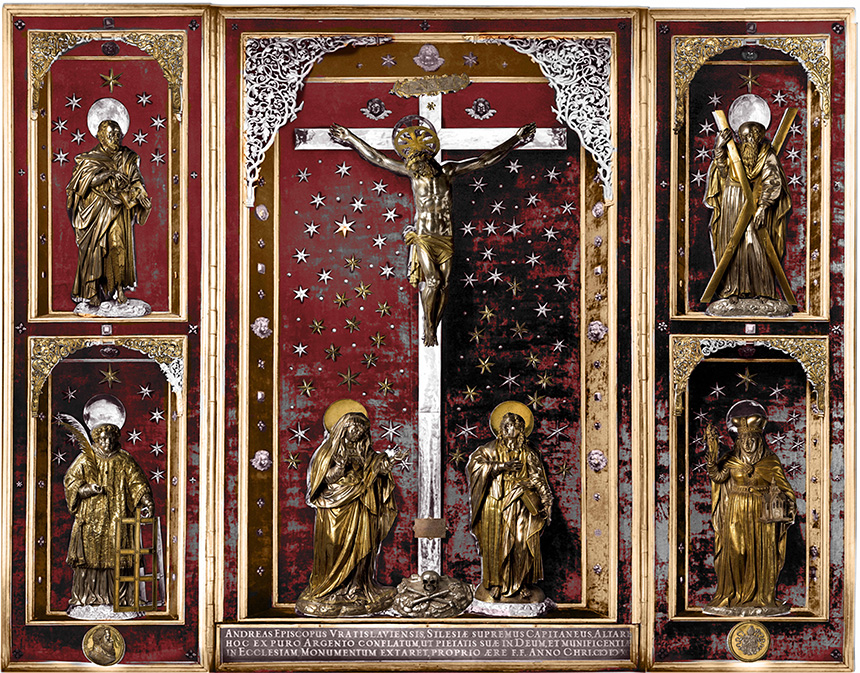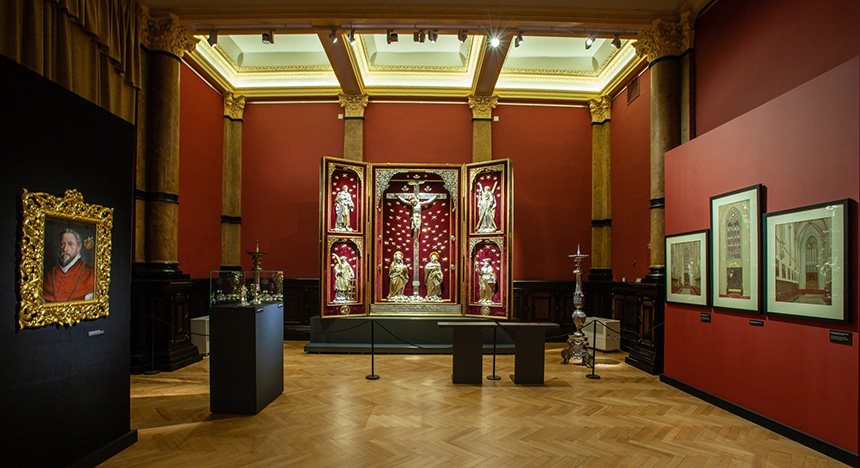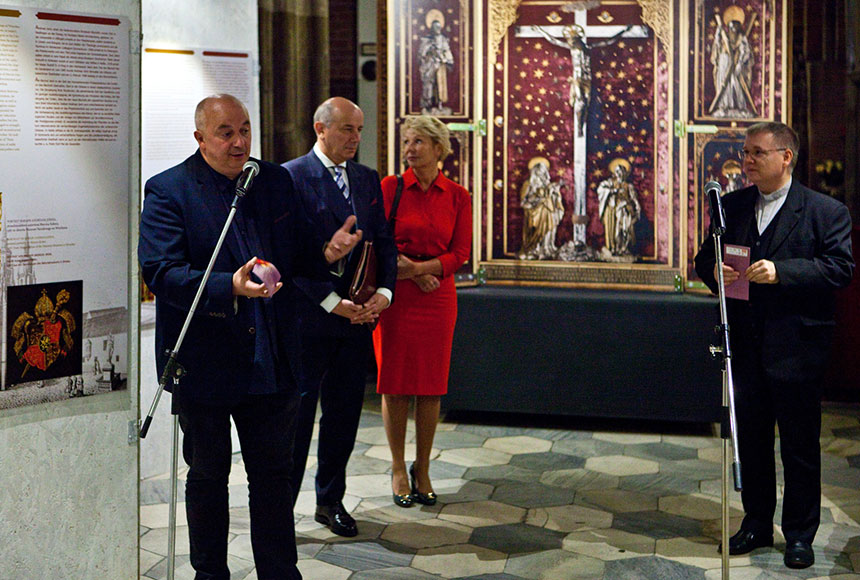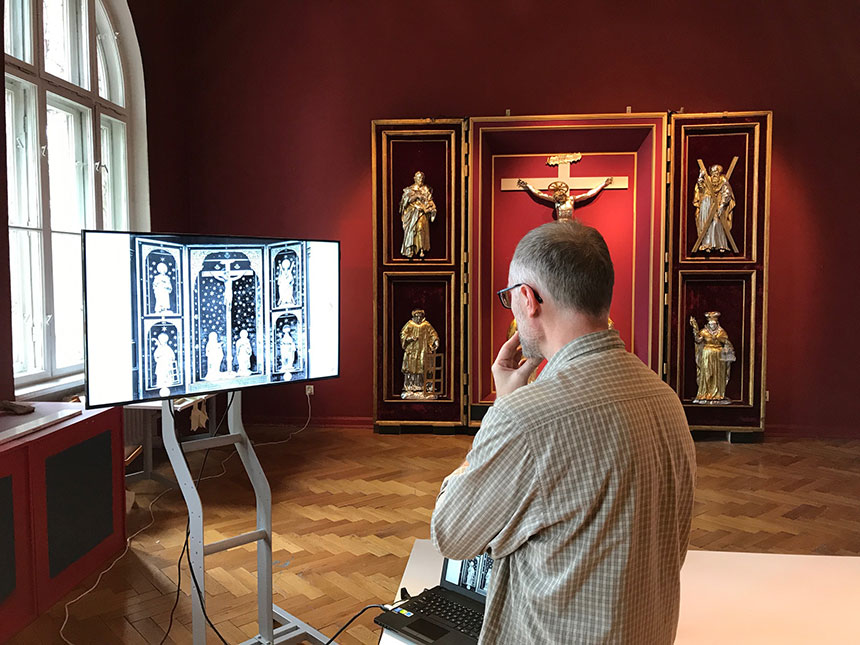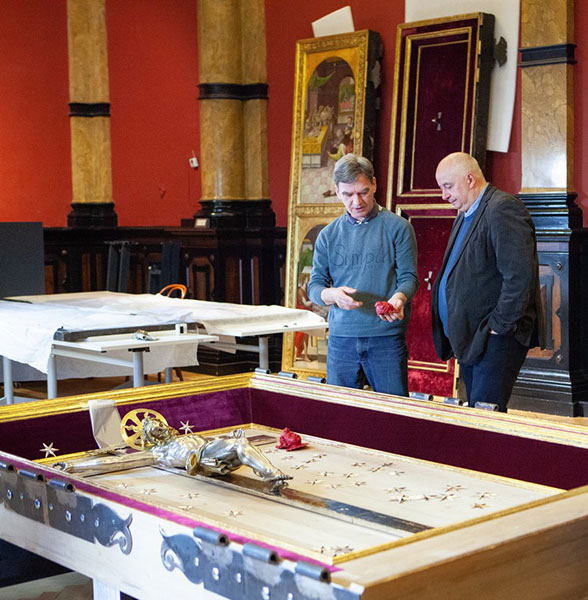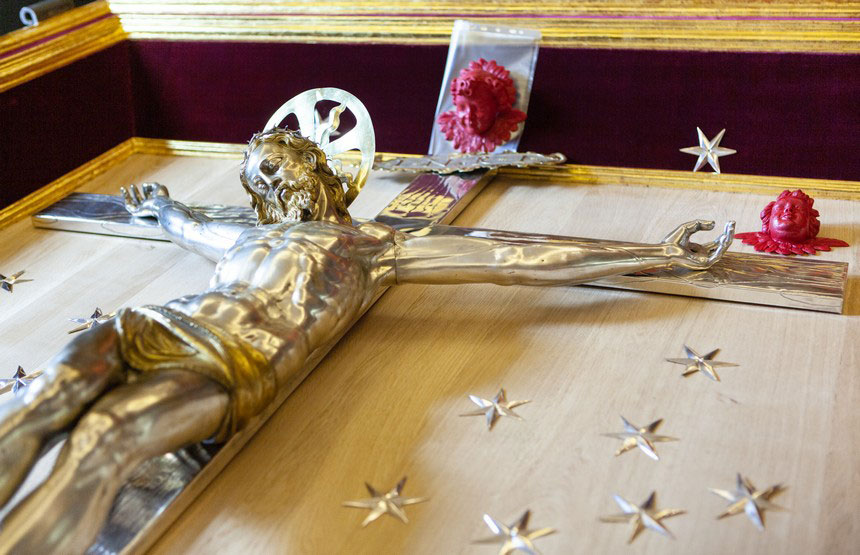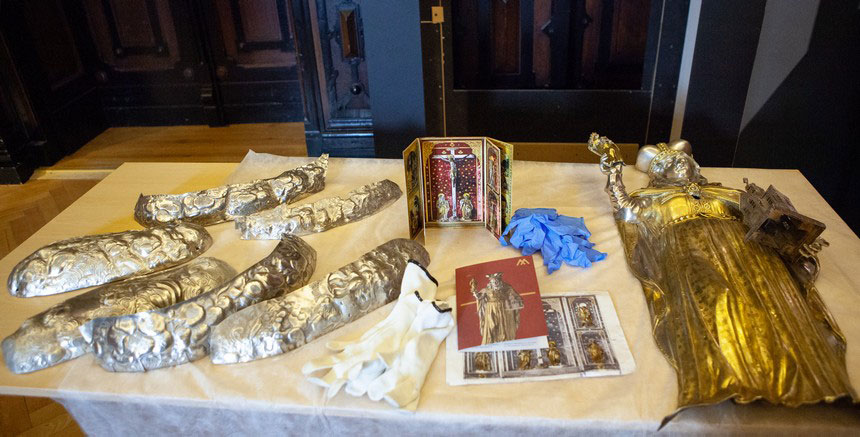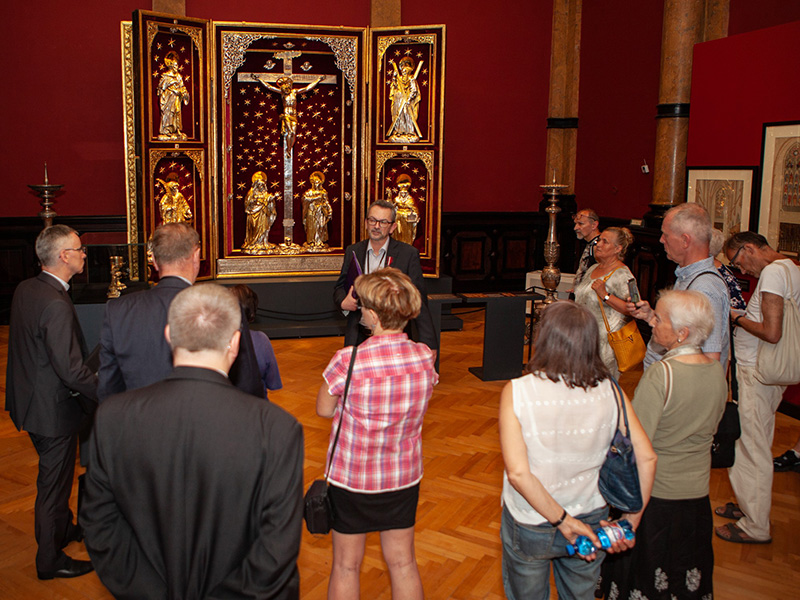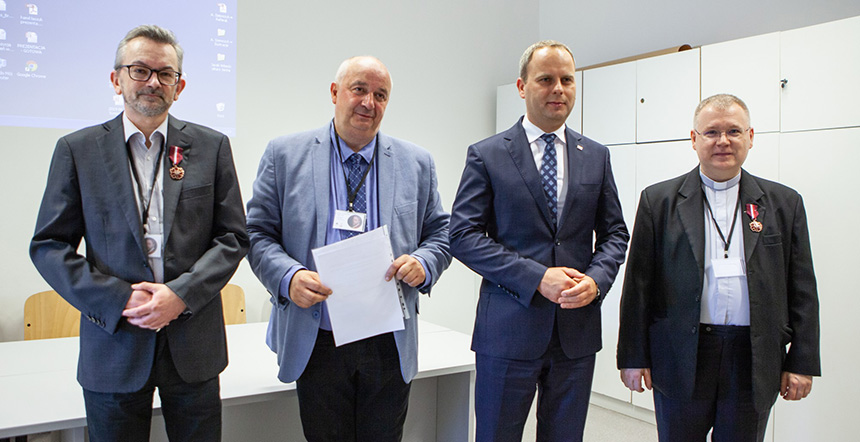Masterpieces of Silverwork from Wrocław Cathedral
30 April – 13 October 2019
Curator of the exhibition: Jacek Witecki
A truly historical event – for the very first time since the Second World War we are able to exhibit in its full glory the famous silver altarpiece from the Wrocław Cathedral of St. John the Baptist. This has been possible owing to the several months of work conducted by the specialist conservation team from the National Museum in Wrocław.
The altarpiece was founded in 1591 by Bishop Andreas Jerin, one of the most prominent clergymen in the Wrocław Diocese, and was made by two renowned artists representing Mannerism in Wrocław: goldsmith Paul Nitsch and painter Bartholomaeus Fichtenberger. The universally admired work of art which was also one of main attractions in the city adorned the cathedral chancel from 1591 to 1945. It was dismantled before the siege of Wrocław (then Breslau, at the end of WW2) and never returned in its old place, while its numerous parts were either damaged or lost. The priceless artefact was prepared for the exhibition by an especially appointed team of conservation experts from the National Museum in Wrocław. The lost fragments have been recreated, and as a result the altarpiece has regained its original appearance and long-lost splendour.
The exhibition also showcases other unique pieces of goldsmithing art made for the Wrocław Cathedral in Augsburg, which was during those times the most important centre of goldsmithery in Europe. Among the exhibited pieces there are: a great silver tabernacle made by J.W. Fesenmayer, an antependium by A. Drentwett, a set of four silver altar figures, set of candleholders and the so-called canon tables. That Augsburg set was a particular form of the second, a later Baroque and Rococo altarpiece which complemented the Mannerist main altarpiece. Visitors can also view , for the first time, the recently discovered designs for restructuring and arrangement of the Cathedral’s chancel dating from the 1930s.
The exhibition is accompanied by a richly illustrated catalogue.
